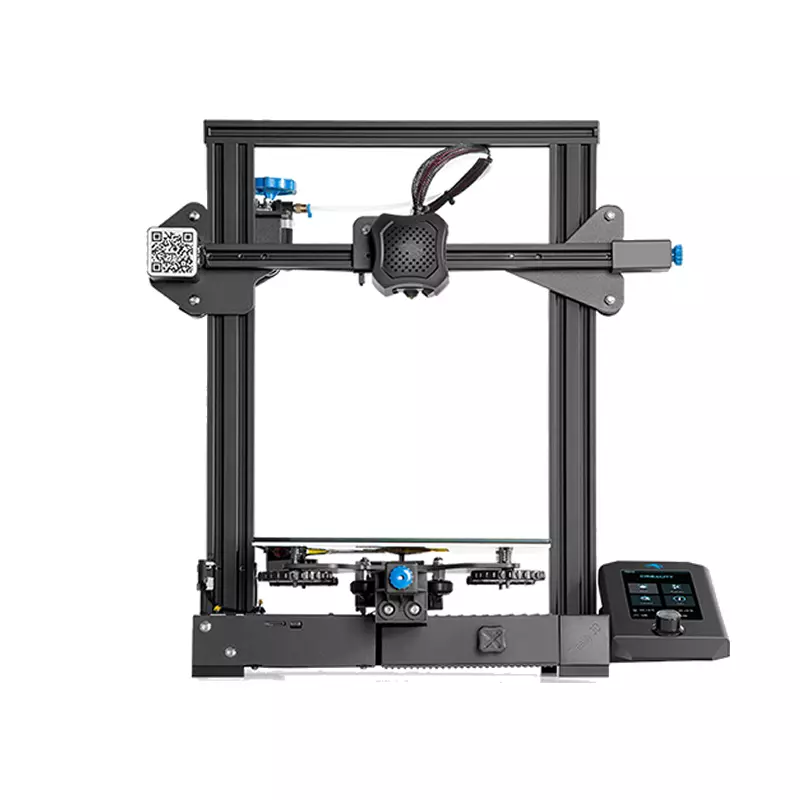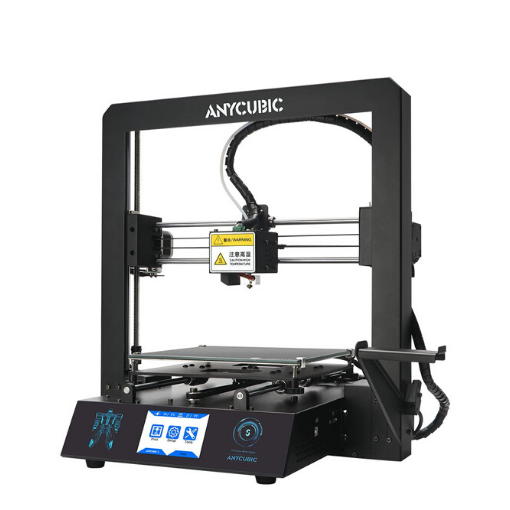Compare Ender 3 V2 vs Mega S
Comparison between the best 3D printers
Choose the best 3D printer at the best price. The cheapest 3D printers are here.
Buy a 3D printer here with 3D Fila.
 |
 |
|
| Model | Ender 3 V2[BUY Ender 3 V2] |
Mega S |
| Printing Material | Filament | Filament |
| Buy Filament for Creality 3D Ender 3 V2 | Buy Filament forAnycubic Mega S | |
| Estimated price | $289,00 | $149,00 |
| Manufacturer | Creality 3D | Anycubic |
| Release Year | 2022 | 2019 |
| Print Volume [mm] | 220x220x250 | 210x210x205 |
| Printer Size [mm] | 470x475x620 | 405x410x452 |
| Weight [kg] | 7,8 | 14,5 |
| Power Loss Recovery | YES | YES |
| Enclosed printer | NO | NO |
| Bed Leveling | Manual | Manual |
| Filament End Sensor | NO | YES |
| Bed type | Heated | Heated |
| Power supply system | Bowden | Bowden |
| Standard nozzle | 0,4 | 0,4 |
| Maximum Nozzle Temperature [°C] | 255 | 260 |
| Maximum Bed Temperature [°C] | 100 | 110 |
| Maximum printing speed [mm/s] | 180 | 100 |
| Filament holder | YES | YES |
| Camera for supervision | NO | NO |
| Recommended filaments | PLA, TPU, ABS, PETG | PLA, TPU, ABS, PETG |
| Recommended slicers | Cura, Simplify, Slic3r | Cura, Simplify, Slic3r |
| Maximum Resolution [mm] | 0,1 | 0,1 |
| Processor | 32 bits | 8 bits |
| Display | Touchscreen TFT 4,3'' | Touchscreen TFT 2,8'' |
| Power Supply | 24V / 360W | 12V / 300W |
| Connectivity | SD / USB | SD / USB |
| Operating systems | Windows, Mac, Linux | Windows, Mac, Linux |
| Date of registration in the system | 2021-04-15 | 2021-04-15 |
| Release date | 2022 | 2019 |
| Extra features | The Creality Ender-3 V2, with a design inspired by the Prusa i3 series, stands out for its DIY assembly structure. With an area of ??250x250x250mm, it supports a variety of projects. It has a micro-USB port, microSD slot and integrated tool drawer. The tension adjustment adapts to different regions. Its manual print bed leveling process requires attention, but offers an enriching experience. Ideal for 3D printing enthusiasts willing to invest time in assembly and adjustment. | The Anycubic Mega S offers a printing platform with excellent adhesion, easy removal after cooling. It has a filament sensor for a better experience with flexible materials and a multilingual and intuitive color touchscreen. Assembly is quick, requiring only 8 screws and 3 connections. It has a large build volume (210 x 210 x 205 mm), high positioning accuracy and supports a variety of materials, including TPU, PLA, ABS and wood. It stands out for its solid metal structure, superior stability, high-quality printing with layer resolution of up to 50 microns, Ultrabase for easy adhesion and removal of parts, resumption of printing after power outage, high-quality extruder for flexible filaments, suspended filament support and stable structure that reduces shaking, improving printing quality. |
| Support for multiple colors and materials (AMS and CFS) | NO | NO |
Notes * |
||
| Cost-benefit | 7 / 10 | 6 / 10 |
| Hardware | 2.1 / 10 | 2 / 10 |
| Tela | . | . |
| Print volume | 3 / 10 | 3 / 10 |
| Performance | 1 / 10 | 0 / 10 |
| [BUY Ender 3 V2] |
Conclusion |
| In evaluating the Ender 3 V2 and the Anycubic Mega S, both printers offer distinct advantages that cater to varying user preferences and requirements. The Ender 3 V2, with its slightly larger print volume, increased maximum printing speed, and more advanced processor, appeals to those looking for a high-performance machine capable of handling diverse projects. Its sturdy build and DIY assembly may suit enthusiasts willing to invest time in fine-tuning their setup. On the other hand, the Anycubic Mega S stands out for its user-friendly assembly process which makes it an attractive option for beginners or those seeking a more straightforward setup. The inclusion of a filament sensor enhances its usability, particularly for flexible materials, and the Ultrabase ensures excellent adhesion and easy part removal. Although it has a slightly smaller build volume and lower maximum printing speed in comparison, it delivers high-quality prints with impressive layer resolution. When considering the price, the Mega S is more budget-friendly, making it a strong contender for those prioritizing cost-effectiveness without significantly sacrificing quality. The Ender 3 V2, while pricier, offers advanced features that may justify its higher cost for more experienced users. Ultimately, the choice between the two will depend on individual preferences for performance, ease of use, and budget constraints. Both printers provide excellent value within their respective price ranges and target audiences, making either a viable option for budding or seasoned 3D printing enthusiasts. |

